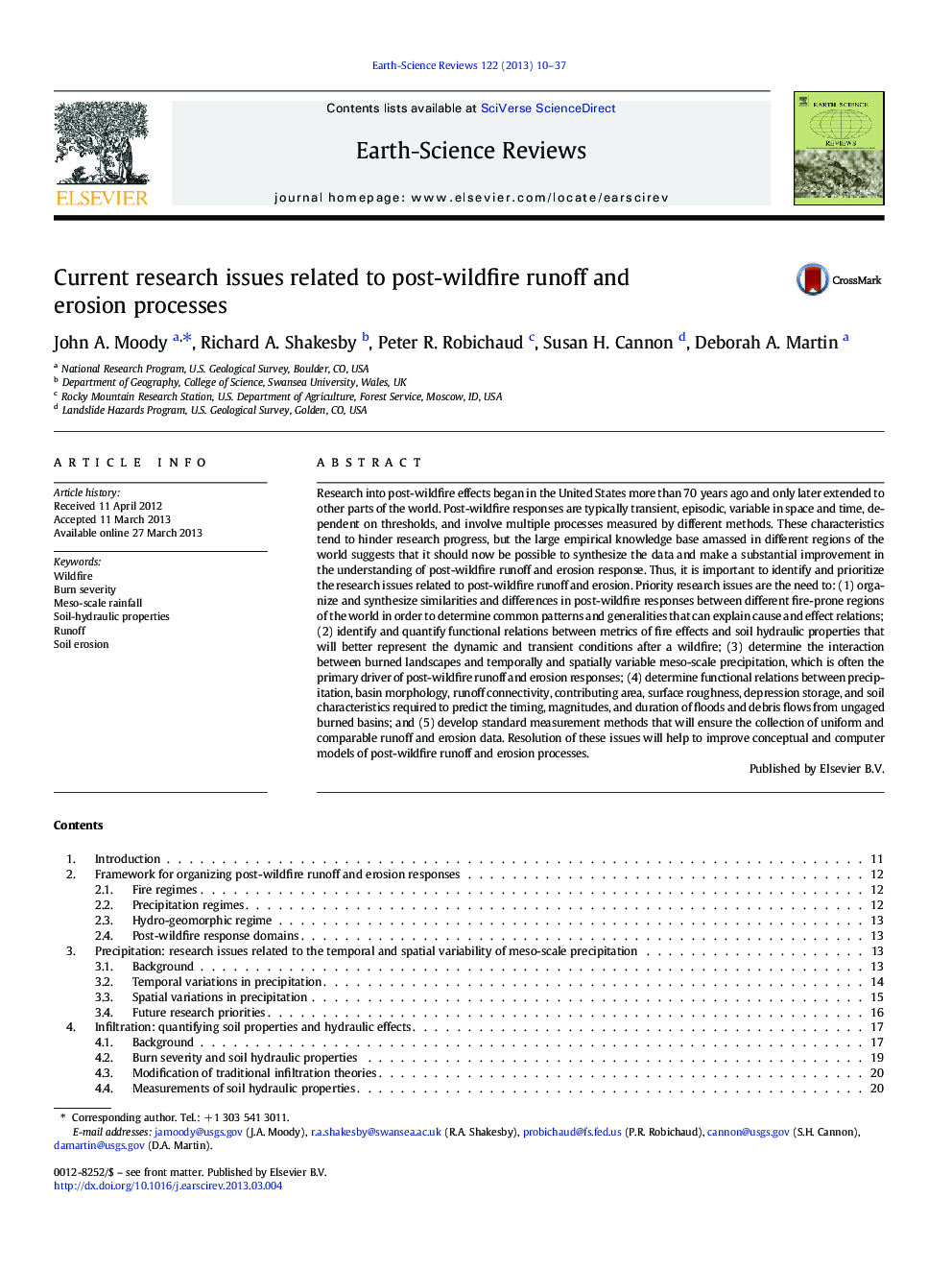| کد مقاله | کد نشریه | سال انتشار | مقاله انگلیسی | نسخه تمام متن |
|---|---|---|---|---|
| 4725841 | 1639980 | 2013 | 28 صفحه PDF | دانلود رایگان |
• Develop an organizational framework for post-wildfire response in different regions.
• Soil properties are a critical link between infiltration, runoff, and erosion.
• Need mathematical relations between burn severity metrics and soil properties.
• Determine physical-based precipitation metrics that best predict runoff and erosion.
• Incorporate basin morphology in runoff models for steep, rough channels.
Research into post-wildfire effects began in the United States more than 70 years ago and only later extended to other parts of the world. Post-wildfire responses are typically transient, episodic, variable in space and time, dependent on thresholds, and involve multiple processes measured by different methods. These characteristics tend to hinder research progress, but the large empirical knowledge base amassed in different regions of the world suggests that it should now be possible to synthesize the data and make a substantial improvement in the understanding of post-wildfire runoff and erosion response. Thus, it is important to identify and prioritize the research issues related to post-wildfire runoff and erosion. Priority research issues are the need to: (1) organize and synthesize similarities and differences in post-wildfire responses between different fire-prone regions of the world in order to determine common patterns and generalities that can explain cause and effect relations; (2) identify and quantify functional relations between metrics of fire effects and soil hydraulic properties that will better represent the dynamic and transient conditions after a wildfire; (3) determine the interaction between burned landscapes and temporally and spatially variable meso-scale precipitation, which is often the primary driver of post-wildfire runoff and erosion responses; (4) determine functional relations between precipitation, basin morphology, runoff connectivity, contributing area, surface roughness, depression storage, and soil characteristics required to predict the timing, magnitudes, and duration of floods and debris flows from ungaged burned basins; and (5) develop standard measurement methods that will ensure the collection of uniform and comparable runoff and erosion data. Resolution of these issues will help to improve conceptual and computer models of post-wildfire runoff and erosion processes.
Journal: Earth-Science Reviews - Volume 122, July 2013, Pages 10–37
